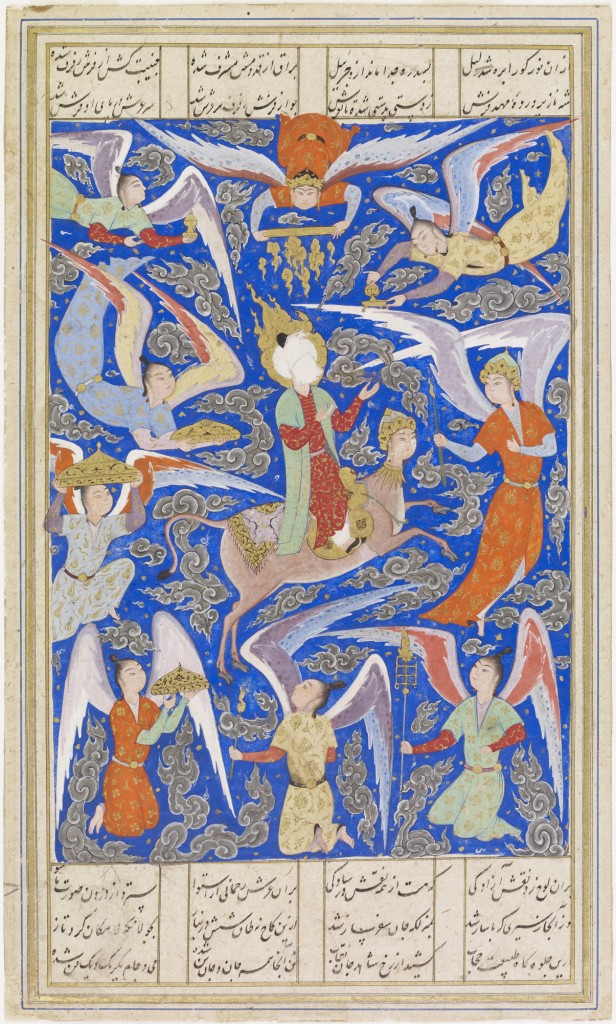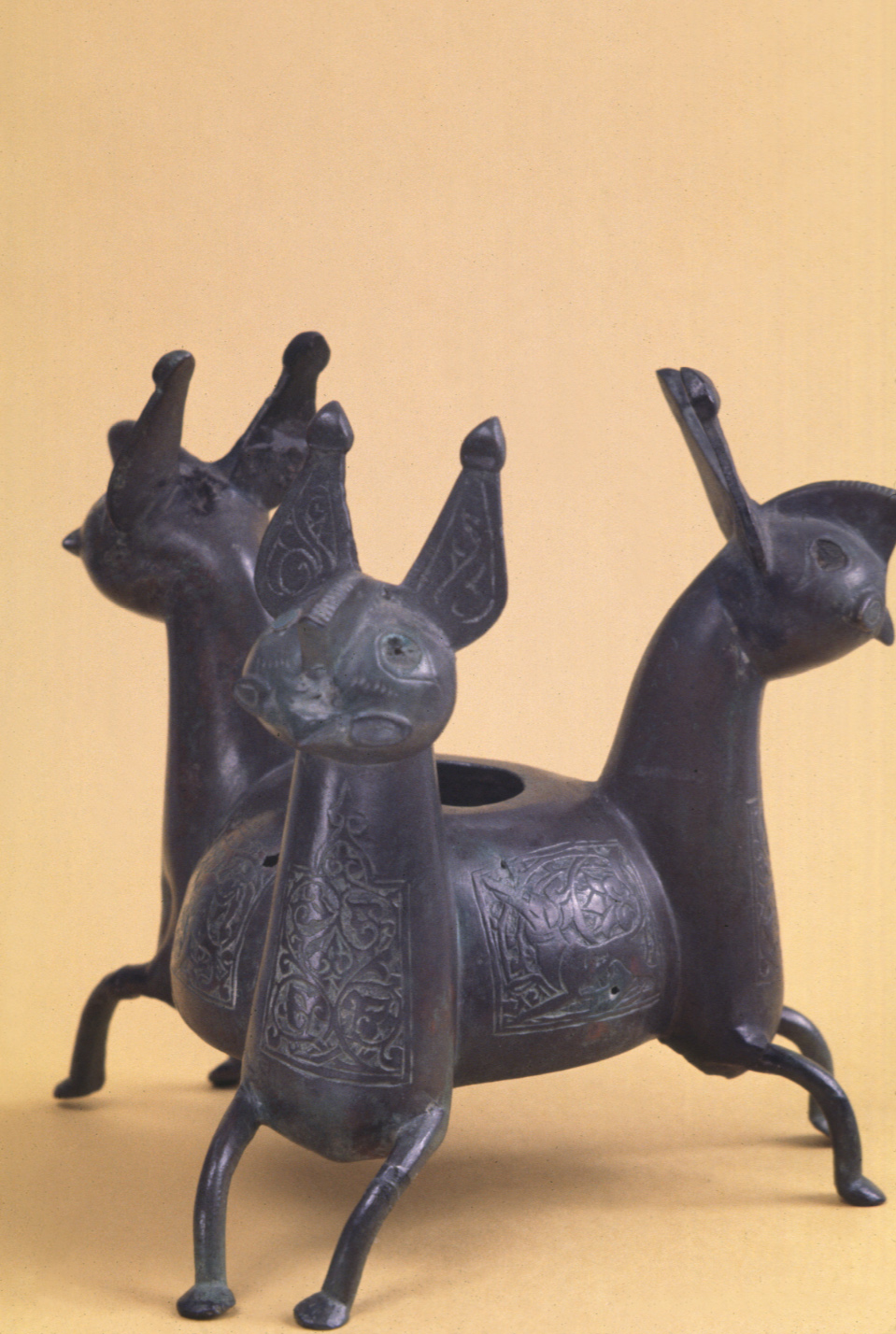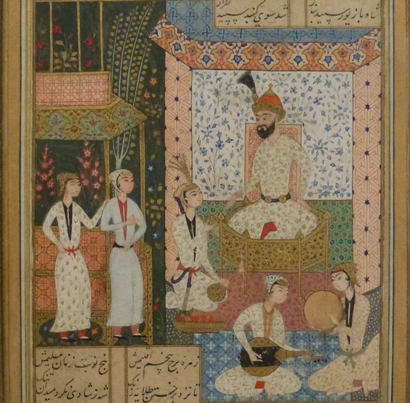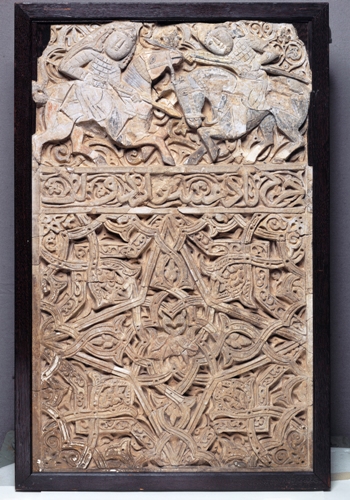SAM Art: Lailat al’Miraj

Muhammad’s Ascent to Heaven (Miraj), 16th century, Persian (modern Iran), Safavid period (1501-1722), opaque watercolor and gold on paper, 9 3/16 x 5 3/8 in., Eugene Fuller Memorial Collection, 47.96. Not currently on view, but accessible online (link below).
A prophet enters an ancient holy place, where he is met by angels. They present him with a gift, a horse with wings who immediately flies the man to a faraway place. Here, the man and winged horse leap into the air, and ascend to heaven itself. The prophet speaks with God. When they come back down to earth, the man dismounts the horse armed with one cornerstone of a faith. Lailat al’Miraj, celebrated this week by Muslims around the world, commemorates this journey, and the prophet Muhammad’s return to earth with the knowledge that God wants Muslims to pray five times daily (Salat).
The story behind the holiday provided inspiration to artists in earlier eras, who often illustrated it as a frontispiece to volumes of the Khamseh, five epics by the Persian poet Nizami. While figures are forbidden from religious settings, illustrating this journey within books of secular sagas proved popular for centuries across the Islamic world.


